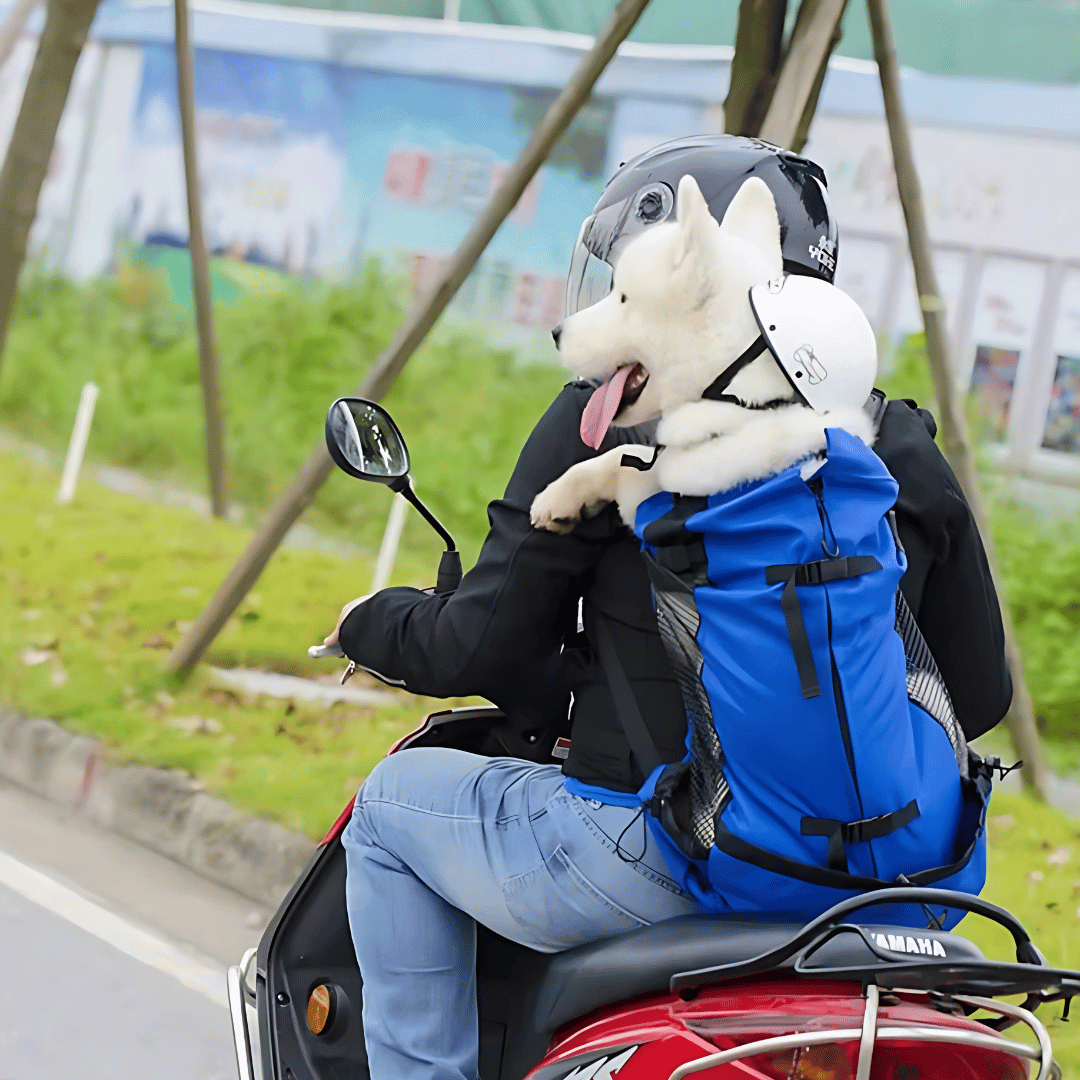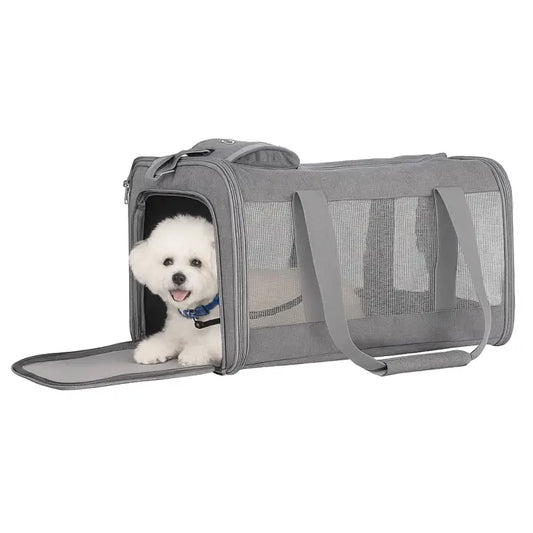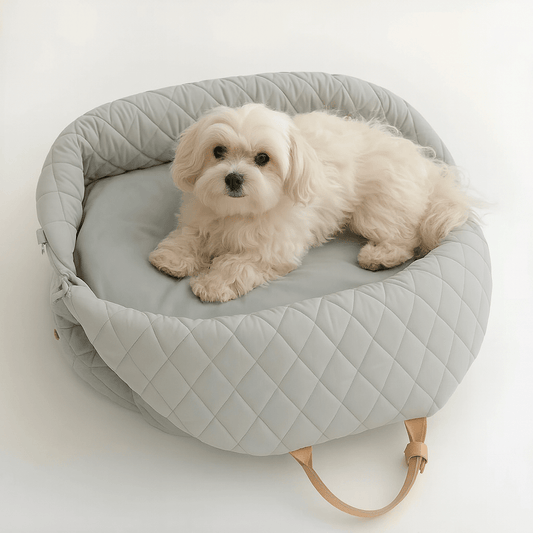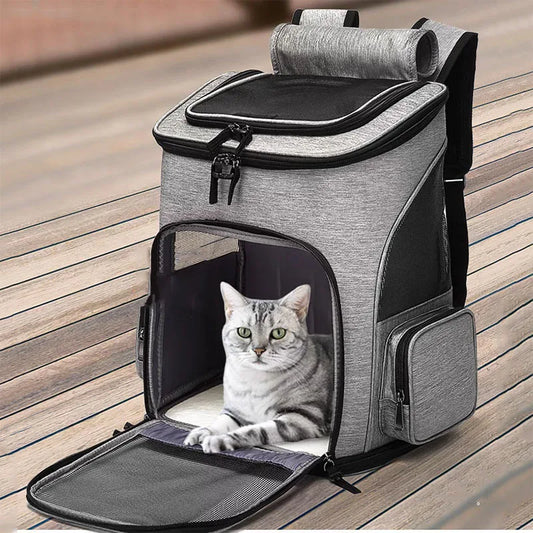
Transform Road Trips with the Perfect Back Seat Extender for Dogs
Share
Introduction
Road trips create unforgettable memories for families, but for dog owners, traveling with furry companions can present unique challenges. The confined space of a vehicle's back seat often leaves our canine friends feeling anxious, uncomfortable, or even unsafe. This is where a specialized solution steps in - the back seat extender for dogs. This innovative accessory has revolutionized the way pet parents journey with their four-legged family members, making road adventures more enjoyable for everyone involved.
Understanding the Importance of a Back Seat Extender for Dogs
Dogs naturally crave security and stability, especially in moving vehicles. Traditional car seating arrangements typically feature gaps between seats or limited flat surfaces that can cause dogs to slip, slide, or become wedged in precarious positions. These circumstances not only induce stress in pets but also create dangerous distractions for drivers who constantly worry about their companion's stability.
A back seat extender bridges these problematic gaps, creating an expanded, level surface specifically designed for canine comfort. This seemingly simple modification yields profound benefits, from preventing potential injuries to alleviating travel anxiety that many dogs experience. For longer journeys especially, these devices prove indispensable to maintaining harmony and safety throughout the expedition.
The Impact of Comfortable Travel on Pets' Well-being
The physiological and psychological effects of comfortable travel on dogs cannot be overstated. When pets feel secure in their environment, their stress hormones decrease significantly, leading to more relaxed behavior and improved overall health during and after travels. Veterinary behaviorists have documented that dogs who travel comfortably display fewer signs of motion sickness, excessive panting, whining, or destructive behaviors born from anxiety.
Furthermore, a dog who associates car rides with positive experiences develops greater adaptability to new environments - an invaluable trait for pets who frequently accompany their owners on adventures. This confidence extends beyond the vehicle, potentially making hotel stays, camping excursions, and visits to unfamiliar locations more pleasant for everyone involved. Essentially, investing in your dog's travel comfort yields dividends in their long-term behavioral development and relationship with exploration.
What is a Back Seat Extender for Dogs?
A back seat extender for dogs represents a paradigm shift in pet travel innovation - a specially engineered platform designed to transform the irregular terrain of your vehicle's rear seating area into a continuous, level surface. Think of it as creating a customized canine lounge right in your car, where the precarious gap between the back seat and the front seat disappears, replaced by an accommodating expanse for your furry companion.
These clever devices typically feature a robust frame system that bridges the space between seats, supporting a flat surface covered with comfortable, pet-friendly materials. The result? A significantly expanded territory where your dog can stretch out, reposition comfortably, or even nap without the risk of slipping into footwells or becoming wedged in dangerous positions.
YappyBoo's Backseat Extender exemplifies the perfect solution for dog owners seeking both practicality and comfort during travels. This thoughtfully designed accessory transforms your vehicle's interior into a pet-friendly haven, completely eliminating the dangerous gap between front and back seats that can cause anxiety or injury to your furry friend.
Engineered with premium waterproof and scratch-resistant materials, this extender provides a secure platform that withstands the rigors of travel with even the most active dogs. Its reinforced construction supports dogs of various sizes, ensuring that your companion remains comfortable and secure throughout your journey. The easy installation process means you'll spend less time setting up and more time enjoying adventures with your pet.
Whether you're planning a cross-country road trip or simply running errands around town, this back seat extender creates a stable, expanded space that allows your dog to relax naturally without constantly struggling for balance on uneven surfaces. This reduction in physical stress translates directly to a calmer, happier travel companion and a more peaceful driving experience for you.
Key Features of Back Seat Extenders
The most effective back seat extenders for dogs incorporate several crucial design elements that elevate them beyond simple space fillers. Premium models feature:
- Adjustable width capabilities to accommodate different vehicle configurations
- High-density foam or reinforced platforms that support varying dog weights
- Non-slip surfaces that provide traction for paws even during sudden stops
- Waterproof and stain-resistant materials that withstand accidents and simplify cleanup
- Collapsible designs for convenient storage when not in use
- Compatibility with existing pet restraint systems like harnesses and seat belts
These thoughtful features work in concert to create an environment that prioritizes both safety and comfort - the dual necessities for successful pet travel experiences. The most sophisticated extenders even incorporate subtle inclines or bolstered edges that help naturally contain your dog within the designated area without making them feel restricted.
Benefits of Using a Back Seat Extender for Dogs
The advantages of implementing a back seat extender extend far beyond simple convenience, delivering multifaceted benefits for both pets and their owners:
"A quality back seat extender doesn't just create space—it creates peace of mind. When your dog feels secure, you can focus on the journey ahead rather than constantly checking your rearview mirror." - Dr. Melissa Bain, Veterinary Behaviorist
The tangible benefits include:
Enhanced safety during emergency braking situations, as dogs remain on a secure surface rather than being thrown forward. Reduced driver distraction, as pets settle more comfortably and require less attention or adjustment during travel. Prevention of musculoskeletal strain that can occur when dogs must maintain awkward positions on uneven surfaces. Mitigation of travel anxiety through the creation of a predictable, stable environment that feels more natural to canines.
Additionally, these extenders protect your vehicle's upholstery from claw marks, dirt, and hair, preserving your car's condition and resale value - a practical consideration for any pet owner who values both their animal's comfort and their investment's longevity.
Choosing the Right Back Seat Extender for Your Dog
Selecting the optimal back seat extender requires thoughtful consideration of multiple variables that affect both functionality and fit. The ideal extender serves as the nexus between your vehicle's specific interior architecture and your dog's unique physical requirements. This careful matching process ensures maximum utility and value from your investment.
Assessing Compatibility with Your Vehicle
Vehicle configurations vary dramatically across manufacturers and models, necessitating careful evaluation before purchase. Begin by measuring the gap between your front and back seats when the front seats are in your typical driving position. Note both the width and depth dimensions, as these metrics will determine which extenders physically fit your automobile.
Consider also the height differential between seat surfaces, as some vehicles feature significant elevation changes that require an extender with adjustable legs or customizable height features. Sedans, SUVs, and trucks each present unique challenges that specialized extenders address through different design approaches.
Additional compatibility factors include:
- Attachment mechanisms that work with your specific seat designs
- Clearance for seat belt buckles and anchors
- Space requirements when installing alongside other vehicle accessories
- Weight capacity relative to your vehicle manufacturer's specifications
Many premium extenders feature adjustable components that accommodate various vehicle interiors, offering versatility for multi-vehicle families or those who may change automobiles in the future.
Considering Your Dog's Size and Needs
Your dog's physical characteristics and behavioral tendencies should significantly influence your selection process. Larger breeds require extenders with superior weight-bearing capabilities and structural integrity, while smaller dogs might benefit more from models with raised edges that provide a sense of security.
Consider your dog's age and mobility status as well. Senior dogs or those with orthopedic conditions benefit from extenders featuring memory foam or therapeutic surfaces that reduce pressure on sensitive joints. Conversely, puppies or highly active dogs need exceptionally durable materials that withstand scratching, chewing, and frequent movement.
Dogs with anxiety issues may respond better to extenders that incorporate familiar fabrics or allow space for comfort items like favorite blankets or toys. The extender should facilitate, not hinder, your established comfort strategies for nervous travelers.
Material and Durability: What to Look For
The construction quality of a back seat extender directly impacts both its functional lifespan and its effectiveness. Examine these critical material considerations:
| Material Component | Optimal Characteristics | Benefits |
|---|---|---|
| Frame Structure | Reinforced aluminum or high-density polyethylene | Lightweight yet strong enough to support larger breeds |
| Surface Material | 600D+ Oxford fabric with waterproof backing | Resists tears, repels liquids, and cleans easily |
| Non-slip Elements | Silicone or textured rubber components | Prevents sliding during acceleration or braking |
| Padding | High-density foam with proper compression resistance | Maintains shape and support even with regular use |
Scrutinize connection points and seams, as these typically represent the first failure points in lesser-quality products. Reinforced stitching, metal (rather than plastic) hardware, and thoughtfully distributed stress points indicate superior engineering that will withstand the rigors of regular use with energetic pets.
Installation and Usage of a Back Seat Extender
The efficacy of a back seat extender hinges not only on its inherent design but also on proper installation and judicious usage. Even the most premium extender will underperform if incorrectly positioned or improperly secured. Mastering the setup process ensures optimal functionality and maximizes the safety benefits these devices offer.
Step-by-Step Installation Guide
Installing a back seat extender typically follows a logical sequence that maintains both stability and security. While specific steps may vary between models, this comprehensive guide covers the fundamental process applicable to most quality extenders:
- Preparation: Clear the vehicle's rear floor area of any debris or objects that might interfere with proper placement. Position front seats to their typical driving configuration before measuring and installing.
- Initial Positioning: Place the extender on the vehicle floor between the front and back seats, ensuring it sits flush against the rear seat cushion with minimal gaps.
- Adjustment: Extend any telescoping components or unfold collapsible sections until the platform reaches the back edge of the front seats. The extender should create a continuous bridge with minimal overhang.
- Securing Mechanisms: Attach any provided straps to appropriate anchor points under seats or around headrest posts. Some models feature non-slip feet or weighted bases that require proper positioning rather than physical attachment.
- Stability Testing: Before introducing your dog, apply moderate pressure to various points on the extender to confirm it remains level and secure without shifting position.
- Surface Preparation: Add any included comfort covers, non-slip mats, or personal accessories like blankets that enhance your dog's comfort while maintaining traction.
For vehicles with unique interior configurations, supplementary stabilization techniques may prove necessary. These might include adding rubber grip pads at contact points or utilizing secondary attachment methods to eliminate any residual movement during travel. The objective remains creating an unwavering platform that withstands both vehicle motion and your dog's movement patterns.
Safety Tips for Using a Back Seat Extender
While back seat extenders significantly enhance travel safety, they function optimally when integrated into a comprehensive pet travel safety system. Consider these crucial guidelines to maximize protection:
Always pair your extender with appropriate restraint systems such as crash-tested harnesses or specialized pet seat belts. These restraints prevent dangerous projection during sudden stops or collisions while still allowing comfortable movement within the secure area. Never rely on the extender alone as a complete safety solution.
Monitor weight distribution carefully, particularly with multiple dogs. Concentrate heavier weights toward the rear seat rather than the extender portion to maintain optimal balance. This precaution prevents tipping or collapse even during sharp turning maneuvers.
Conduct regular safety inspections before each journey, checking for any signs of wear, loose connections, or material fatigue that might compromise structural integrity. Pay particular attention to stress points where your dog typically places the most weight.
Maintain appropriate barriers between the pet area and the driver's space to prevent unexpected interactions that could create dangerous distractions. Some extenders feature optional vertical panels or mesh barriers that facilitate this separation while maintaining visibility.
Remember that even with an extender installed, dogs should never be left unattended in vehicles, particularly in extreme temperatures. The extender enhances comfort but doesn't mitigate environmental hazards associated with enclosed vehicles.
Transforming Road Trips: Practical Tips and Tricks
With your back seat extender properly installed, you've created the foundation for extraordinary journeys with your canine companion. However, truly transformative travel experiences incorporate additional strategies that address the comprehensive needs of traveling dogs, from physical comfort to mental stimulation.
Preparing Your Dog for Travel
Successful road trips begin long before departure through methodical preparation that acclimates your dog to both the vehicle environment and the back seat extender itself. This proactive conditioning significantly reduces travel anxiety and promotes positive associations with journey experiences.
Introduce the extender gradually by initially installing it in your parked vehicle. Allow your dog to explore and become familiar with this new surface during short, stationary sessions reinforced with treats and praise. This preliminary exposure helps dogs recognize the extender as their designated territory before adding the complexity of vehicle motion.
Progress to brief driving excursions to favorite destinations like parks or friends' homes, creating positive associations with the extender and travel process. Incrementally increase journey duration as your dog demonstrates comfort with shorter trips. For dogs with pronounced travel anxiety, consult your veterinarian about appropriate calming aids or supplements that might facilitate this adjustment period.
Establish pre-travel routines that incorporate adequate exercise before departure. A physically tired dog typically settles more readily during travel, making better use of the comfortable space provided by the extender. This preparation proves especially valuable for high-energy breeds that might otherwise struggle with confinement.
Ensuring Safety and Comfort During Trips
Throughout your journey, thoughtful monitoring and environmental management enhance the benefits provided by your back seat extender:
Maintain appropriate climate control, remembering that the rear compartment of vehicles often experiences different temperatures than the front seating area. During summer months, ensure adequate airflow reaches your dog's space, potentially using specialized pet-safe cooling mats on the extender surface for additional heat regulation. In winter, consider adding a secured blanket that provides warmth without sliding dangerously.
Schedule regular breaks every 2-3 hours to allow your dog to stretch, eliminate, and reset mentally. These intervals prove particularly important for senior dogs or those with bladder control limitations. Use these stops as opportunities to offer fresh water and assess your dog's comfort level on the extender, making any necessary adjustments to bedding or positioning.
Monitor your dog's body language for signs of discomfort or motion sickness, which might include excessive drooling, panting, whining, or restlessness despite the improved accommodations. Some dogs benefit from facing forward rather than sideways on the extender, as this orientation can reduce vestibular disturbances that contribute to nausea.
Games and Activities to Keep Your Dog Engaged
Extended journeys benefit tremendously from thoughtful entertainment strategies that prevent boredom while respecting the spatial limitations of vehicle travel:
Introduce rotation-based toy systems where new or novel items appear at scheduled intervals during the journey. This approach maintains interest through the psychological principle of novelty without requiring excessive objects in the vehicle simultaneously. Favor quiet, soft toys that won't create hazardous projectiles during unexpected stops.
Consider travel-friendly puzzle feeders that dispense treats slowly when manipulated. These interactive devices provide mental stimulation and extend the engagement value of edible rewards. Select models with stable bases that work effectively on the flat surface of your extender without tipping or sliding excessively.
For dogs that respond to auditory enrichment, explore specially designed canine music or audiobooks that have demonstrated calming effects. These audio solutions create an additional dimension of environmental management that complements the physical comfort provided by the extender.
During longer stops, utilize portable, packable games that can be deployed at rest areas to provide both physical exercise and cognitive engagement. These intermissions refresh your dog's patience for the next travel segment while reinforcing the positive associations with the journey experience.
Frequently Asked Questions
As with any specialized pet equipment, back seat extenders generate numerous questions from conscientious pet owners seeking to make informed decisions. These common inquiries address the practical considerations that influence purchasing choices and usage patterns.
Can I Use a Back Seat Extender with Other Pet Accessories?
Absolutely—in fact, back seat extenders often function most effectively when integrated with complementary travel accessories. The key lies in thoughtful combination and proper installation that maintains the integrity of each component.
Most quality extenders are designed with compatibility in mind, featuring flat surfaces that accommodate seat covers, pet beds, or travel crates. When pairing with seat covers, install the seat cover first, extending it over the back seat, then position the extender atop the cover portion that drapes into the footwell. This arrangement creates waterproof continuity across the entire pet area.
For safety harnesses and restraint systems, ensure that attachment points remain accessible after the extender installation. Premium extenders incorporate strategic openings or channels that allow seat belt tethers to connect without compromising structural stability. Always verify that restraint systems can function as designed without interference from the extender's frame or support mechanisms.
Travel barriers or mesh dividers that separate the front and back seat areas generally work seamlessly with extenders, as they address different aspects of travel safety. The extender creates horizontal stability while the barrier provides vertical containment—a comprehensive solution for active dogs that might otherwise attempt to access the driver's area.
When determining compatibility with specialized accessories like orthopedic travel beds or cooling mats, consider the combined height of the extender and accessory to ensure your dog maintains a comfortable position relative to window height and overall visibility. The ideal configuration allows your dog to see outside when desired without requiring constant standing.
How Do I Clean and Maintain a Back Seat Extender?
Proper maintenance significantly extends the functional lifespan of your back seat extender while ensuring hygiene standards appropriate for close contact with your pet. Effective cleaning protocols vary based on material composition, but these universal principles apply to most quality products:
Establish a regular cleaning schedule proportional to usage frequency and your dog's tendencies. For pets that shed extensively or those with outdoor lifestyles that introduce significant debris, weekly cleaning prevents buildup that can deteriorate materials over time. Less frequent travelers might adopt monthly maintenance routines.
For fabric surfaces, begin with thorough vacuuming using upholstery attachments to remove hair and particulate matter from seams and textured areas. Focus particular attention on crevices where the extender meets vehicle seats, as these junctions often collect surprising amounts of debris. For persistent pet hair, a rubber brush or slightly dampened rubber glove often proves more effective than vacuuming alone.
Address stains promptly using cleaning solutions specifically formulated for pet products. These specialized cleaners neutralize organic compounds rather than merely masking odors. Always test cleaning solutions on inconspicuous areas first to verify colorfastness and material compatibility. For waterproof extenders, microfiber cloths typically outperform paper products that might leave residue.
Periodically disassemble components (if the design allows) to inspect and clean structural elements that support your dog's weight. Remove accumulated hair or debris from hinges, telescoping mechanisms, or folding points to prevent mechanical compromise. Apply appropriate lubricants to moving parts as recommended by the manufacturer to maintain smooth operation.
Allow thorough drying before storage or reinstallation, particularly for extenders with foam elements that might develop mildew if enclosed while damp. When not in use for extended periods, store the extender in climate-controlled environments away from direct sunlight that could degrade materials or cause unwanted color changes.
Are Back Seat Extenders Safe for All Dog Breeds?
While back seat extenders offer versatile utility across most breeds, important physiological and behavioral differences require consideration when assessing suitability for specific dogs. Safety depends not only on the extender's inherent design but also on appropriate matching between product specifications and your dog's unique characteristics.
Size considerations represent the most obvious variables, with weight capacity being paramount. Most quality extenders specify maximum weight ratings, typically ranging from 30-100 pounds depending on construction materials and support systems. For giant breeds like Great Danes or Mastiffs, seek specialized extenders with reinforced frames and additional support structures, or consider alternative travel solutions like dedicated cargo area arrangements.
Beyond simple weight metrics, physical proportions influence compatibility. Brachycephalic (flat-faced) breeds such as Bulldogs, Pugs, or Pekingese often benefit from extenders with slight inclines that facilitate easier breathing positions. Conversely, long-backed breeds like Dachshunds or Basset Hounds require exceptionally stable platforms that discourage jumping or positions that might stress vulnerable spinal structures.
Behavioral tendencies also affect safety profiles across different breeds. Naturally restless or high-energy breeds such as Border Collies or Jack Russell Terriers may require additional restraint systems used in conjunction with the extender to prevent dangerous movement during travel. Breeds with strong chewing instincts necessitate extenders constructed from exceptionally durable, chew-resistant materials.
Age and health status transcend breed considerations but warrant equal attention. Senior dogs with arthritis may struggle with certain extender heights or surfaces, while puppies with developing joints benefit from supportive materials that cushion growth plates during motion. For dogs with specific medical conditions, consult your veterinarian about ergonomic considerations that your extender selection should address.
Conclusion
The journey toward transforming everyday travels into extraordinary experiences with your canine companion reveals itself as surprisingly accessible through thoughtful equipment selection. The back seat extender for dogs emerges not merely as a convenience accessory but as a fundamental component of responsible, enjoyable pet travel.
Summarizing the Benefits of Back Seat Extenders for Dogs
Throughout our exploration, we've uncovered the multifaceted advantages these specialized platforms deliver to both pets and their owners. The physical benefits manifest in improved stability that reduces muscular strain, prevents injuries from shifting or falling during transit, and creates comfortable positioning options that accommodate natural canine resting postures. These tangible improvements directly influence your dog's physiological well-being during journeys of any duration.
The psychological impact proves equally significant, as the expanded, level territory reduces anxiety triggers associated with unstable footing or confinement to awkward positions. This mental comfort translates to quieter, more relaxed travel companions who develop positive associations with vehicle journeys rather than apprehension or stress. For many dogs, this psychological shift transforms car rides from necessary evils into anticipated adventures.
For owners, the practical benefits extend beyond the satisfaction of providing optimal care. Reduced driver distraction represents a crucial safety enhancement, as settled dogs require less attention and intervention during travel. The protection of vehicle interiors from damage, dirt, and hair preserves automotive investments while simplifying post-travel cleanup. These pragmatic advantages complement the emotional reward of sharing more activities with well-adjusted, comfortable canine companions.
Encouraging Safe and Enjoyable Travels for Pets and Owners
As we conclude our comprehensive examination of back seat extenders, the broader perspective reveals their role within the evolving landscape of pet-inclusive lifestyles. These thoughtfully engineered solutions reflect our society's growing recognition of pets as family members deserving consideration in all aspects of daily life, including transportation and travel experiences.
The decision to invest in quality travel equipment for your dog represents more than a purchase—it embodies a commitment to inclusive adventure and shared experiences. When properly selected and utilized, back seat extenders eliminate significant barriers that might otherwise limit the destinations and activities you can comfortably enjoy together. This expanded horizon of possibilities strengthens the human-canine bond through diverse shared experiences.
As you contemplate enhancing your travel setup with a back seat extender, consider the comprehensive value beyond immediate comfort. The cumulative effect of stress-free journeys extends well beyond individual trips, potentially increasing your willingness to include your dog in more activities and destinations. This virtuous cycle creates more opportunities for exercise, socialization, and environmental enrichment that benefit your dog's overall quality of life.
Ultimately, the transformation promised in our exploration delivers precisely that—not merely a modified vehicle interior, but a fundamentally reimagined travel experience where both species' needs receive thoughtful accommodation. Through this balanced approach, the road ahead unveils itself not as a necessary transit between destinations but as part of the adventure itself—comfortable, secure, and joyfully shared with your four-legged companion.





